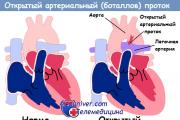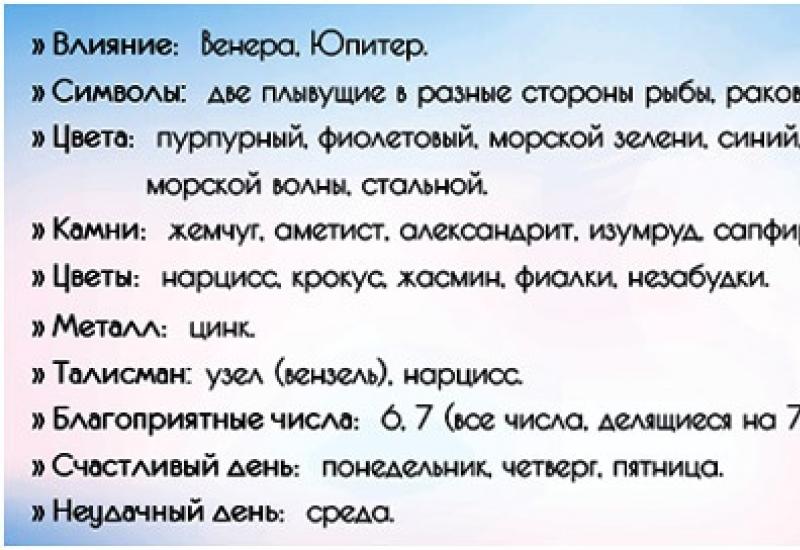How to teach your child the ability to take turns. Why the place in the queue for kindergarten may shift
Despite the obvious efforts of central and local authorities, there are still not enough places in children's educational institutions (preschool educational institutions) for everyone. This circumstance leads to the formation of a queue for kindergarten. Let’s figure out how to provide a child with the services of an educational institution in 2019. How to use new technologies to get in line without leaving home.
Legislative framework
Kindergartens are institutions whose activities are regulated by current regulatory documents. The state not only directs their work, but also strictly controls them.
The main documents mandatory for execution by the management of the preschool educational institution are:
- Decree of the President of the Russian Federation No. 599, signed on May 7, 2012. It obliges state-owned preschool institutions to admit children from the age of three.
- Federal Law No. 273 of December 29, 2012 reduces this bar to two months. This rule applies to private kindergartens.
Thus, parents have a choice in which kindergarten to enroll their children. If you need childcare for a child under three years old, you will have to contact a private nursery group. In other cases, you can try to get into a government agency.
Download for viewing and printing:
General information about the queue
 Parents who are unable to sit with their children need to arrange a seat in advance. In addition, it is advisable to understand the preferential rights received by certain categories of citizens.
Parents who are unable to sit with their children need to arrange a seat in advance. In addition, it is advisable to understand the preferential rights received by certain categories of citizens.
They make it possible to place a child in a preschool educational institution:
- without queue;
- as a matter of priority.
Placing a child in a preschool educational institution is a rather serious procedure. It consists of several stages:
- Collection of necessary documents.
- Determination of a suitable preschool educational institution (up to three institutions).
- Submitting an application that complies with the established template (must contain all the necessary information).
- A child undergoing a medical examination.
- Obtaining information about the order.
- Seating is provided upon availability.
How does a preschool educational institution form a queue?
The administration of a state preschool educational institution is obliged to approach parental statements with an unbiased approach and ensure openness in the progression of the priority order. The principles of its activity are as follows:
- Applicants are placed in a queue based on the date of application.
- The provision of a place depends on:
- queue positions;
- the onset of the right to preschool education services (child’s 3rd birthday).
- Beneficiaries are provided with places in accordance with the procedure established by law, subject to availability.
Do you need information on this issue? and our lawyers will contact you shortly.
Who is eligible for preferential priority?
 The existing legislative framework guarantees some citizens preferences in enrolling their children in kindergarten. Thus, without waiting in line, they are required to admit to state preschool educational institutions children who:
The existing legislative framework guarantees some citizens preferences in enrolling their children in kindergarten. Thus, without waiting in line, they are required to admit to state preschool educational institutions children who:
- appeared in families of orphan parents (age limited to 23 years);
- are raised by citizens who have the status of Chernobyl victims;
- the parent is a prosecutor or judge;
- live in dysfunctional families.
Who is prioritized?
 In addition to citizens whose children are admitted to preschool educational institutions unconditionally, there are several other separate categories. They are usually called first priority. That is, if one of the following categories is proven, then the child is admitted to kindergarten first, pushing aside the applications of other citizens.
In addition to citizens whose children are admitted to preschool educational institutions unconditionally, there are several other separate categories. They are usually called first priority. That is, if one of the following categories is proven, then the child is admitted to kindergarten first, pushing aside the applications of other citizens.
Priorities include parents:
- police officers;
- police officers transferred to the reserve due to injuries received while on duty;
- military contractors;
- disabled people;
- having a large family (large families).
At the discretion of the preschool educational institution administration, another “line” of applicants is formed, who are given priority when deciding on the distribution of places. This preferential category may include:
- single mothers;
- parents whose children already go to this kindergarten;
- preschool educational institutions employees in need of its services.
How to get in line
 Obtaining a place begins with an application. It is necessary to announce to the administration of the preschool educational institution that the parents have a child in need of the services of this institution. The queue is formed separately for each municipality until the end of June. Based on this data, the distribution of available seats is carried out.
Obtaining a place begins with an application. It is necessary to announce to the administration of the preschool educational institution that the parents have a child in need of the services of this institution. The queue is formed separately for each municipality until the end of June. Based on this data, the distribution of available seats is carried out.
The application must be accompanied by documents describing the child. These include the following:
- a copy of the parent’s passport and TIN;
- copies of children's birth certificates;
- medical insurance for children (compulsory medical insurance policy);
- medical certificate (form F26);
- bank account details (for transferring compensation payments).
For example, an orphan parent under the age of 23 must obtain a certificate of his status from the guardianship authorities. The prosecutor provides information from the place of service, just like a judge or police officer.
Medical examination
 A visit to specialists at the clinic is a prerequisite for being placed on the waiting list. The child must undergo a full examination, during which his state of health is determined. The following specialists are required:
A visit to specialists at the clinic is a prerequisite for being placed on the waiting list. The child must undergo a full examination, during which his state of health is determined. The following specialists are required:
- pediatrician;
- dentist;
- ophthalmologist;
- surgeon;
- neurologist and others.
- ordinary;
- specialized.
Can they refuse to place me in a queue?
 The law does not provide reasons for refusing to accept an application for a place in a preschool educational institution. However, in practice this happens. Refusal or removal from the queue occurs for the following reasons:
The law does not provide reasons for refusing to accept an application for a place in a preschool educational institution. However, in practice this happens. Refusal or removal from the queue occurs for the following reasons:
- Errors in the application form.
- Failure to provide required documents.
- Technical problems on the site (if the registration was made via the Internet).
Submitting an application electronically
 The development of Internet technologies greatly facilitates the process of queuing for kindergarten. So, in 2019, you can do this without leaving your home through the government services website. The algorithm of actions is as follows:
The development of Internet technologies greatly facilitates the process of queuing for kindergarten. So, in 2019, you can do this without leaving your home through the government services website. The algorithm of actions is as follows:
- Register on the portal.
- Receive a password to enter your account (by email)
- Log in to your personal account.
- In the services section, select “Registration of a child in kindergarten.”
- Go to the “Record” tab.
- In the window that appears for selecting the type of service, click “electronic”.
- Carefully fill out the application form using the information from the documents.
- Choose a preschool educational institution using tips and maps.
- Attention: you are allowed to designate up to three preferred kindergartens. They should be numbered according to the principle of advantage.
- Upload electronic copies of mandatory papers to the portal.
- Submit your application.
- Wait for notification that it has been reviewed (up to 10 days).
The list of documents provided in electronic form completely coincides with those submitted on paper (see above).
Queue tracking
 Parents have the opportunity to check the order of application at any time. You can do this:
Parents have the opportunity to check the order of application at any time. You can do this:
- on the government services portal;
- by calling the support center.
Please note: the above center is open 24 hours a day. To obtain information, you must provide the operator with information about the desired government service, as well as the individual information of the applicant.
The most convenient way to track the queue is to use your personal account on the government services website. To do this you will have to perform a number of simple steps:
- Log in to your account using your password.
- In the services section, find “Enrolling a child in kindergarten.”
- Refer to the “Check Sequence” section.
Dear readers!
We describe typical ways to resolve legal issues, but each case is unique and requires individual legal assistance.

Date of compilation of the digest - 10/08/2012.
A deduction for a child is provided to each parent until his income, calculated cumulatively from the beginning of the year, reaches 280,000 rubles. Before providing a deduction, the accountant must study the documents submitted by the employee and verify the number and sequence of children of each parent. Children are not always born in the same marriage, and therefore their number and order between husband and wife may not coincide. Moreover, it is not necessary to be a registered husband and wife to receive deductions; it is enough to simply have children together. And the number of children of each parent is important, since from January 1, 2012, the deduction for the third and subsequent child is 3,000 rubles, while for the first and second child - 1,400 rubles. Sometimes parents decide that only one of the spouses, for example the father, will receive mom's and dad's deductions. In order for an organization to correctly provide such deductions to its employees, in this issue we have prepared answers to questions related to various situations.
In this issue you will learn:
1. Why the amounts of deductions for parents for the same child may differ.
2. What documents to require from an employee applying for a deduction.
3. In what cases can a double deduction not be provided?
4. How to “redistribute” the deduction between spouses and more.
1. The procedure for providing tax deductions for children
1.1. In what order is the order of children determined: chronologically by date of birth or depending on whether standard personal income tax deductions are provided for them?
A tax deduction is made for each child under the age of 18, as well as for each full-time student, graduate student, resident, intern, student, cadet under the age of 24. When determining the applicable amount of the standard tax deduction, the total number of children is taken into account, that is, the first child is the oldest child, regardless of whether a deduction is provided for him. In this case, the order of children is determined in chronological order by date of birth.
Question: An employee of the organization has three children aged 19 (works), 12 and 7 years old. In accordance with Federal Law of November 21, 2011 N 330-FZ, which came into force on November 22, 2011 and extends its effect to legal relations that arose from January 1, 2011 in terms of providing a standard tax deduction for the third and subsequent children, as well as for children- disabled people, the deduction amount is 3000 rubles. How should this rule be applied: should the order of children be determined in chronological order by date of birth or depending on whether a standard personal income tax deduction is provided for them? ("Explanations of executive authorities on the conduct of financial and economic activities in commercial organizations", 2012, No. 2) (ConsultantPlus)
Question: About the procedure for providing and the amount of the standard personal income tax deduction for children for parents with one child and many children. (Letter of the Federal Tax Service of Russia dated 05/05/2012 N ED-2-3/326@) (ConsultantPlus)
1.2. Is a standard personal income tax deduction provided for the third child in the amount of 3,000 rubles if the first two children are already adults (they are over 24 years old) and standard personal income tax deductions are not provided for them? Is such a child considered the third in line of children or is he provided with a standard personal income tax deduction as for the first child supported by his parents?
A taxpayer who is the parent of three children, for two of whom standard tax deductions are no longer provided, has the right to receive a deduction for the third child for each month of the tax period in the amount of 3,000 rubles from 01/01/2012.
Question: Is a standard personal income tax deduction available for the third child in the amount of 3,000 rubles if the first two children are already adults (over 24 years of age) and the standard personal income tax deduction is not provided for them? Is such a child considered the third in line of children or is he provided with a standard personal income tax deduction as for the first child supported by his parents? (Letter of the Ministry of Finance of the Russian Federation dated February 10, 2012 N 03-04-05/8-146) (ConsultantPlus)
1.3. Does the wife have the right to a deduction of 3,000 rubles? for a child, if the husband has two children from his first marriage, their natural mother pays alimony by court decision, and the children themselves live with their father in this family and are supported. At the same time, the marriage was registered, and a common child was born from this marriage. For the husband's older children, the wife was provided with deductions when they were studying full-time in educational institutions.
A taxpayer who is a parent of a child has the right to receive a standard tax deduction for a third child in the amount of RUB 3,000. for each month of the tax period, since when determining the priority, the spouse’s two children from his first marriage are also taken into account.
Question: ...About the procedure for providing a standard tax deduction for personal income tax in accordance with paragraphs. 4 paragraphs 1 art. 218 of the Tax Code of the Russian Federation as amended by Federal Law No. 330-FZ of November 21, 2011. (Letter of the Ministry of Finance of the Russian Federation dated January 19, 2012 N 03-04-06/8-10) (ConsultantPlus)
1.4. When determining the order of children for establishing the amount of the standard tax deduction, are supervised children also taken into account in chronological order by date of birth? For example, a woman is the mother of three children born in 2002, 2004 and 2008. She is also recognized as the guardian of a child born in 2003. Is it right in this case to consider that the child under guardianship is second in determining the amount of the standard tax deduction?
When determining the order of children to establish the size of the standard tax deduction, the total number of children, including wards, is taken into account in chronological order by date of birth, that is, the first child is the oldest child, regardless of whether he is a ward or his own. The document confirming the date of birth of the child is the child’s birth certificate, submitted by the taxpayer to the tax agent. According to Art. 23 of the Federal Law of November 15, 1997 N 143-FZ “On Acts of Civil Status” (hereinafter referred to as Federal Law N 143-FZ), this certificate contains, in particular, information about the date and place of birth of the child.
1.5. What is the procedure for providing a standard personal income tax deduction if the first child is 27 years old, the second child has died, and the third child is 13 years old?
A taxpayer who is a parent of three children (including a child who died) has the right, from January 1, 2012, to receive a standard tax deduction for the third child for each month of the tax period in the amount of RUB 3,000.
Question: ...1. What is the procedure for providing a standard personal income tax deduction to a taxpayer who supports three children, of which the third is a disabled child? 2. In what order is a standard personal income tax deduction provided to a taxpayer who is in a second marriage, has two (three) children from a previous marriage and pays (or does not pay) alimony for their maintenance? 3. Are children who have died taken into account when determining the applicable amount of the standard personal income tax deduction? (Letter of the Ministry of Finance of the Russian Federation dated February 10, 2012 N 03-04-06/8-33) (ConsultantPlus)
Question: The taxpayer supports two minor children. Moreover, earlier (before the birth of these children) the taxpayer had a stillborn child. In order to provide standard tax deductions established by paragraphs. 4 paragraphs 1 art. 218 of the Tax Code of the Russian Federation, what kind of living children will be considered and in what amount will the corresponding deduction be provided in 2012? (Expert consultation, 2012) (ConsultantPlus)
1.6. What is the procedure for providing a standard personal income tax deduction to a taxpayer who supports three children, the third of whom is disabled?
When providing a standard tax deduction to a taxpayer who supports three children, the third of whom is disabled, the tax deductions for the third child and the disabled child are not summed up. In this case, a special rule is applied that establishes a tax deduction for a disabled child in the amount of 3,000 rubles, regardless of his account status. Therefore, if a disabled child were the first, the amount of the deduction would be the same (3,000 rubles).
Question: An individual has three children, the third is disabled since childhood. An individual received a standard personal income tax deduction in the amount of 4,000 rubles. (1000 + 1000 + 2000), since in relation to a disabled child, the specified deduction was provided in double amount. According to the amendments made to Art. 218 of the Tax Code of the Russian Federation, from January 1, 2011, the standard personal income tax deduction for the third child is provided in the amount of 3,000 rubles. In what amount is an individual entitled to receive a standard personal income tax deduction for a disabled child? (Letter of the Ministry of Finance of the Russian Federation dated February 14, 2012 N 03-04-05/8-178) (ConsultantPlus)
1.7. On what basis should children be considered first, second, third if there are three children of the same birth date in a family?
According to Art. 23 of Federal Law N 143-FZ, the child’s birth certificate contains the date of compilation and the registration number of the birth certificate. In paragraph 2 of Art. 22 of this Law determines that in the event of the birth of twins or more children at the same time, a birth certificate record is drawn up for each child, indicating the sequence of birth of the children. In the case of state registration of the birth of twins or more children, information about the children is entered into the registration form in the sequence corresponding to the sequence of birth of the children. At the same time, in column 7 “Number of children born (one, twins or more children)” the number of children born is indicated in words, and it is also noted how the child was born (clause 21 of the Rules for filling out civil registration forms and state registration certificate forms acts of civil status approved by Decree of the Government of the Russian Federation of April 17, 1999 N 432). Consequently, in the situation under consideration, the chronological order of birth of children will correspond to the sequence of serial numbers of birth records contained in birth certificates.
Question: An individual is the father of three children: the first child is a school student aged 17, the second and third are twins aged 12, one of whom is a disabled child. In this situation, it is impossible to determine who is the second child of the twins, since they have the same date of birth. The standard tax deduction is possible in two versions: 1000 + 1000 + 3000 = 5000 rubles; 1000 + 3000 + 3000 = 7000 rub. How much can an individual receive a standard personal income tax deduction? (Letter of the Ministry of Finance of the Russian Federation dated December 21, 2011 N 03-04-05/8-1075) (ConsultantPlus)
2. What documents are required to receive a “children’s” personal income tax deduction for a spouse’s child?
2.1. What documents must be submitted to the spouse in order to receive a standard personal income tax deduction for the spouse’s child in the following situation: the spouse’s natural child lives with the spouses (the marriage is registered), while the spouse is neither the child’s natural father nor his guardian (the child is not adopted) . The child bears the mother's maiden name. There is a dash in the “Father” column on the child’s birth certificate. The spouses have common children born in marriage in 2008 and 2010. In accordance with the certificate of a large family, the husband is the father, the wife is the mother, and they support three children.
If a spouse's child lives together with the spouse, regardless of his adoption, a standard tax deduction can be provided to the spouse who supports the child. Documents confirming the right to receive a standard tax deduction for a child can be, in particular, a copy of the child’s birth certificate, a copy of the passport (with a note on the registration of marriage between the parents) or a marriage registration certificate, a certificate from the housing and communal services about the child’s cohabitation with the parent (parents), the parent’s spouse, the parent’s statement on the spouse’s participation in providing for the child.
Question: Is a spouse entitled to receive a standard personal income tax deduction for adopted children if the adoptive parent certificate is issued to the spouse? What documents are required to receive a standard personal income tax deduction for adopted children in this case? (Letter of the Ministry of Finance of Russia dated 04/06/2012 N 03-04-05/8-465) (ConsultantPlus)
2.2. The employee is registered and lives at the address indicated in the family composition certificate at the employee’s place of residence; his wife and child actually live with him, but they are registered at a different address. What documents can confirm that the wife and child actually live together with the employee and the child is supported by both parents?
If a child actually lives with his parents and is supported by them, then regardless of the child’s registration at the place of residence of one of the parents, both parents have the right to receive a standard tax deduction. Documents confirming such a right may be, in particular, a copy of the child’s birth certificate, a copy of the passport (with a note on the registration of marriage between the parents) or a marriage registration certificate, a certificate from an educational institution stating that the child is a student. The fact that a child lives together with a parent can be confirmed by a certificate from the place of residence of the relevant housing maintenance organization (Unified Information and Settlement Center), or a certificate from a homeowners’ association, housing or housing construction cooperative, or a certificate from a city, town or rural administration (such a certificate can be issued to an employee if he actually pays utility bills for a child and wife who actually live with him). In addition, this fact can be established in court.
Question: When applying for a job, an employee for the purpose of receiving a standard tax deduction for personal income tax established by paragraphs. 4 paragraphs 1 art. 218 of the Tax Code of the Russian Federation, presented the following documents: 1) marriage certificate; 2) the child’s birth certificate; 3) a certificate from the educational institution (full-time study); 4) a certificate of family composition at the employee’s place of residence, in which the wife and child are not indicated. The wife and child actually live with this employee, but they are registered at a different address. No documents confirming their cohabitation were presented. Is an employee entitled to receive a standard personal income tax deduction? What supporting documents are needed in this case? (Letter of the Ministry of Finance of Russia dated 04/02/2012 N 03-04-05/8-401) (ConsultantPlus)
2.3. What documents must a spouse submit to the employer to receive standard tax deductions for children if there are four children in the family, three of whom are the spouse’s children from a previous marriage, and one is a common child? The wife's three children are registered at the place of registration of the wife and her ex-husband, and the common child is registered at the place of registration of the present husband. For three children, the former spouse pays alimony, for which there is a corresponding voluntary agreement. Does the second spouse have the right to receive tax deductions and what documents should he submit, taking into account the fact that the children are actually dependent on three citizens?
If three children of a spouse from the first marriage live together with the second spouse, standard tax deductions can be provided to the second spouse, who supports the children. Documents confirming the right of the second spouse to receive deductions for children can be, in particular, copies of the birth certificates of all four children, a copy of the passport (with a note about the registration of the marriage between the parents) or a marriage registration certificate. The documents confirming the fact of children living together with the mother’s spouse are discussed above.
Question: A woman has four children, three of them from her first husband, and one child from her second husband. The first child is 14 years old, the second is 10 years old, the third is 8 years old, and the fourth is 8 months old. Children from the first spouse live together with the second spouse, and they are registered at the place of residence of the first spouse. The first spouse pays alimony for the maintenance of three children. Both spouses work in the same organization, which denied the second spouse a standard personal income tax deduction. Who is eligible to receive a standard personal income tax deduction and what documents must be submitted? (Letter of the Ministry of Finance of Russia dated 04/02/2012 N 03-04-05/8-402) (ConsultantPlus)
2.4. What documents confirm the right to receive standard tax deductions for personal income tax for a taxpayer who is in a second marriage, has two (three, etc.) children from a previous marriage and pays alimony for their maintenance?
If the marriage between the parents is dissolved, the second parent, who is in a second marriage and lives separately from the children, must submit copies of the children’s birth certificates and documents confirming the payment of alimony for the maintenance of minor children to confirm the right to receive tax deductions.
Question: ...The father of the child, who is an employee of the organization, pays child support and does not live with him. After the death of the child's mother, the grandmother, who lives with him, is appointed as the child's guardian. Does an employee of an organization have the right to receive a standard personal income tax deduction in double the amount for a minor child in accordance with paragraph. 13 pp. 4 paragraphs 1 art. 218 of the Tax Code of the Russian Federation, subject to the submission of the following documents: birth certificate of the child; passports with a note on the divorce from the child’s mother (a new marriage has not been entered into); death certificate of the child's mother? (Letter of the Ministry of Finance of Russia dated July 19, 2012 N 03-04-06/8-206) (ConsultantPlus)
Question: A taxpayer pays alimony for the maintenance of a minor child. At the same time, the amount of alimony withheld by the organization from the employee’s income is lower than the minimum subsistence level for children established by law. On this basis, the organization refused to provide the payer with a standard personal income tax deduction for a child. Is the organization's position correct? (Expert consultation, 2012) (ConsultantPlus)
3. Providing deductions for children when parents divorce
The documents presented in the digest are included in the ConsultantPlus System.
This summer, 1,511 children received vouchers to kindergarten. Despite this, the queue of children wishing to attend a preschool educational institution is still more than 2000. Now, in order to track the movement of the queue, it is not necessary to contact the education department - you can look it up on the Internet.
You can register your child in the queue for a place in kindergarten from the moment you receive a birth certificate. When registering, you must provide a birth certificate, a passport of one of the parents and a document confirming an extraordinary or primary right (if any).
Priority kindergarten
President of the Russian Federation- the highest government position in the country. Now President of the Russian Federation- Putin Vladimir Vladimirovich. Vladimir Putin second and fourth President of the Russian Federation, elected in the elections of the President of the Russian Federation. How President of the Russian Federation, he is the guarantor of the Russian Constitution and the Supreme Commander-in-Chief of the Russian Armed Forces. President of the Russian Federation– guarantor of the rights and freedoms of citizens of the Russian Federation.
Elections of the President of the Russian Federation appointed by the Federation Council of the Russian Federation. Decision on presidential elections adopted no earlier than 100 days and no later than 90 days before voting day. In accordance with Article 5 of the Federal Law “On the Election of the President of the Russian Federation”, presidential elections are held on the second Sunday of the month in which voting was held at the previous general presidential elections of the Russian Federation and in which the President of the Russian Federation was elected six years ago.
Priority kindergarten
Don't confuse your browser's address bar with your search bar. You should enter a query into the search if you do not know the address of a specific site that provides an answer to the problem you are interested in. For example, for those who want to add new features, entertainment programs or games to a newly purchased device, you can download games for Samsung galaxy s2 using Internet resources. To do this, you should enter into the search exactly the query that interests the user, for example, “download games” and then download them on the sites proposed by the system.
You can find out the queue for kindergartens in Lipetsk in a few minutes, provided that you have access to the Internet, if you follow the instructions given below. To do this, you need to open a page called “Official website of the Administration and Council of Deputies of the city of Lipetsk” by typing the following address in the browser address bar: lipetskcity.ru.
MDOU Kindergarten No. 7 combined type
Children are received from 7.00 to 8.30 every day, except weekends and holidays. Timely arrival at kindergarten is a necessary condition for the proper organization of the educational process.
All children return from vacation or after illness with a certificate of no contact with infectious patients and about their state of health from the clinic.
Teachers of the group, regardless of their age, must be addressed by name and patronymic. Conflict and dispute situations must be resolved in the absence of children. If you were unable to resolve any issue with the group teachers, contact the head.
We ask you not to give your child chewing gum, sucking candy, chips or crackers with you to kindergarten.
We strongly do not recommend wearing gold and silver jewelry to your child, or giving expensive toys or mobile phones.
To create comfortable conditions for a child’s stay in a preschool educational institution, it is necessary:
Neat appearance, clothes and shoes buttoned up with all buttons;
Washed face;
Clean nose, hands, trimmed nails;
Trimmed and carefully combed hair;
Clean underwear;
Availability of disposable handkerchiefs.
Open Lipetsk
Queue position taking into account the preferential category within the preschool educational institution - this is the queue number among children of your age, taking into account beneficiaries who have confirmed their preferential statuses(beneficiaries have the right to confirmation of their benefits in the period from 01.03. to 31.05. of the intended year of enrollment)
What's annoying is the complete silence. Well, you enrolled in kindergarten, well, let your parents know somehow, even by Russian post, damn it. And if I hadn’t looked myself, the train would have left, because... if you do not react to this action, then you are expelled from the kindergarten, and accordingly, you are also thrown out of the queue.
Queue for kindergarten
I'm terribly indignant at the moment. I joined the queue for kindergarten when the child was 3 months old. In a good way they should go this fall at 3 years old. Everything was fine until today, when I stopped by for the 25th time to look at our electronic queue at the electronic commission in Moscow. At the beginning of January, I checked we were 10, it seemed like we were done! Before this there were still movements back and forth. It turns out THAT'S NOT ALL! After my husband’s sister called with a storm of indignation.
Hello girls. Sorry for yet another post about kindergarten, but I really want to get some advice. There will be a lot of letters. My daughter is 2.3. The Friday before last we went to kindergarten for the first time. The first day we came, met the teacher, and discussed the problems of the child’s adaptation. I told her that Vika is very “motherly” and avoids strangers, to which the teacher said that in any case, you shouldn’t drag out the addiction for a long time, it’s better to let her cry for a few days, etc. Then we played for another half hour and went home.
The waiting list for kindergarten has been eliminated
The event was opened by the head of the Kolomna District Education Department E.I. Rybkina. She noted that to solve the problem of waiting lists in kindergartens, a special program has been developed and is being implemented, one of the main tasks of which is to open additional places. The result of the program is obvious: in the kindergarten in Biorki the waiting list was eliminated as of October 1, 2012.
On October 17, an additional group opened in the Alyonushka kindergarten in the village of Biorki. Twenty more young residents of the Kolomna district, hand in hand with happy parents, now cross the threshold of their first educational institution every day. Now the kindergarten accepts 100 children.
Find out your turn at kindergarten! »
“Find out your turn at kindergarten!” — a banner with such a call appeared on one of the central streets of Shymkent. The billboard, installed on the initiative of the city education department, recommends that all interested Shymkent residents consult the website www.shymkent.edu.kz in search of the necessary information.
Considering that today more than 28 thousand Shymkent children are waiting for a coveted place in a preschool institution, the advice is very practical. The regularly updated website actually contains a lot of useful information. A separate section is devoted to the kindergarten theme. Any Shymkent parent, without leaving home, can now obtain information not only about the number of kindergartens remaining in the city and their location, but also about their design capacity and actual occupancy. The numbers, by the way, do not inspire optimism. In preschool institutions designed for 7,385 children, there are already almost 12 thousand of them. At the same time, kindergartens can accommodate no more than 3 thousand children every year. This year, five more kindergartens were added to the existing ones - previously used for other purposes. In general, a thousand places have been added. But this is catastrophically not enough.
How to find out the queue for kindergarten
It is worth considering that the distribution of places in any kindergarten may change after some time. This is due to the fact that parents of referred children do not plan to send them to kindergarten in the upcoming school year or have received a place in a kindergarten that is not suitable for them.
Applications are placed in a queue according to the date of their submission, which is also the date of registration of the preschooler. The age of the children is also taken into account. Thus, children of the same age group are located in the order in which the parents submitted their applications.
03 Aug 2018 161Enrolling a child in a preschool institution is a procedure that is strictly regulated by law.
Let's look at it in detail in this article.
Legislative regulation of the issue
Registration of children, as well as their subsequent placement in preschool educational institutions carried out on the basis:
- Federal Law “Education in the Russian Federation”;
- Federal Law “On the organization of provision of state and municipal services”;
- Administrative regulations of the local administration of the corresponding cities based on the above federal acts.
Principles of the procedure
As a rule, children are assigned to kindergartens.
 When processing all applications, sort by base:
When processing all applications, sort by base:
- enrollment of children;
- Children entering kindergarten on a general basis.
Next, a system is built among beneficiaries based on the date of registration of the application, in which children who have benefits at the federal level are given priority for enrollment. Then come children who have preferential treatment at the municipal level. Among them, a queue is also formed in accordance with the date of registration.
In this way, the ordering and subsequent distribution of children in each age category takes place.
When places are available in a certain preschool institution for children of the appropriate age, the system selects applications with the appropriate date of receipt (usually September 1) according to the above algorithm.
Deadlines
Places in preschool educational institutions are allocated within the time limits established by local administrative regulations of the relevant regions.
As a rule, the start date for the distribution of places is June 1 of the current year. The end date is September 1, however, if individual places become available in groups, distribution can also be made during the academic year.
Regional features
The distribution of places in kindergartens, as mentioned earlier, occurs on the basis of administrative regulations, which are approved by local authorities.
Moscow and region
 So, for example, in accordance with the regulations of the city of Moscow, distribution occurs in the following order:
So, for example, in accordance with the regulations of the city of Moscow, distribution occurs in the following order:
- electronic system as places become available in kindergarten groups;
- When registering, parents are allowed to choose up to 3 kindergartens to which the child can potentially be placed;
- Recruitment and issuance of directions for enrollment are carried out from March 1 to June 1 annually;
- Registration of a referral in case of vacancy within 5 days from the date of making the relevant decision.
Petrozavodsk
In this city the distribution of children carried out in the following sequence:
- Completing groups by freeing up places in the electronic automated system;
- The distribution of places begins on February 1 and ends on April 1.
Krasnoyarsk
The administrative regulations provide the following distribution order:
- The distribution period begins on June 1 and ends on September 1;
- The distribution of seats is carried out by an electronic system;
- Children under guardianship and children of families who have changed their place of residence on the basis of the state program for the resettlement of compatriots have the right to initial enrollment.

Samara region
In the Samara region and in the city of Tolyatti, the administrative procedure provides for:
- The distribution of places is carried out by a specialist using an electronic resource;
- The period of placement in a preschool institution is from April 1 to September 1 annually;
- Formation is carried out under the following conditions:
- Extraordinary right to enrollment;
- First priority for enrollment;
- Date of filing the registration application;
- Child's age;
- Category of the kindergarten group specified in the application;
- After the procedures for allocating places, after 10 days, parents are sent a referral for registration in children. garden.
Chelyabinsk region
In accordance with the Administrative Regulations of the city of Chelyabinsk, places assigned to kindergarten:
- During the period from May 15 to May 30 of each year (mass recruitment);
- Within a month, if information is received about the availability of free places (current staffing);
- The distribution of places is carried out based on the date of registration of the application, as well as the availability of federal and municipal benefits;
- Carried out by a specialist from the education department using electronic databases of applicants.
Cheboksary
The distribution of places on the basis of the Administrative Regulations of the city of Cheboksary is carried out in the following order:
- Seats are allocated between June 1 and September 1 each year;
- The procedure takes place in accordance with the date of registration of the application for registration, the availability of federal and municipal benefits;
- A specialist from the education department uses an electronic database of applicants to form a queue.
Chita
 In the city of Chita, the administrative procedure for enrolling children in kindergarten provides:
In the city of Chita, the administrative procedure for enrolling children in kindergarten provides:
- Distribution of places among children aged 1.5 to 8 years;
- Acquisition is carried out from March 1 to June 1 of each year;
- Places are distributed in accordance with the date of application, the availability of preferential rights (federal, municipal);
- Issuance of directions for enrollment in the institution is carried out within 10 days from the date of the decision.
Samara region
Administrative regulations of the city of Samara, regulating the procedure for the distribution of places, provides:
- Groups are recruited from April 1 to September 1 annually;
- The allocation of seats is carried out by an automated system, which takes into account the date of registration of the child, the availability of benefits, the age of the child and the category of the group;
- The notification period for the possibility of enrollment in a preschool institution is 10 days after the end of the administrative procedure for the distribution of places.
Kirov
The administrative regulations of this city and region assume the following distribution procedure places in kindergartens:
- The distribution of places is carried out from April 1 to September 1;
- The procedure takes place using an automated system, which determines the priority taking into account the date of registration of the application, the availability of benefits, the age category of the child, as well as the category of the group;
- Applicants are informed within five days from the end of the seat allocation procedure.
About the formation of a queue for kindergarten for children in Kopeysk, see the following video:
The coming weekend promises to be interesting: you and your children are heading out of town by car. Which of the following scenarios for the development of events most reminds you of yourself?
You have clearly planned everything in advance: you spent a long time choosing and booking a hotel room, reserved a table in a restaurant, carried out a technical inspection of the car and provided backup options, so you are completely calm before the trip;
You get ready as if you found out about the trip half an hour before departure: mechanically and indiscriminately you throw things into your bag, a few quick-made sandwiches, remember the half-filled gas tank, but hope to find a gas station along the way;
Family weekend? Great! You are always ready for adventure, because you have so many funny stories for children. There is no need to prepare much for the trip: your older children will pack sandwiches with them, and you can buy a warm jacket for yourself at your destination.
If the first option is definitely yours, then you are most likely the eldest or only child in the family. If the second scenario is to your liking, then you are like the middle child. But the third point is suitable for the youngest.
The birth order of children makes its own adjustments
When you see twins for the first time, you try to find differences in their appearance, but you don’t find any. And only after a while, in front of you there are already 2 people who are not quite similar to each other. And they are distinguished not only by external data that is invisible at first glance, but also by character traits.
I’m not a mother of twins, but while expecting the birth of my second son, I expected to see in him at least the slightest resemblance to my eldest child. But my children are so different from each other that sometimes strangers ask me the question: do they have the same dad? Often parents, like me, discover not only obvious differences in appearance, but also very different characters in their children, who occupy certain roles in the family. What does this depend on: on genetics, on our behavior with them, or on the order in which they are born? Let's look at this issue with family psychologist Gail Gross, who believes that "... parents behave differently with each child."














